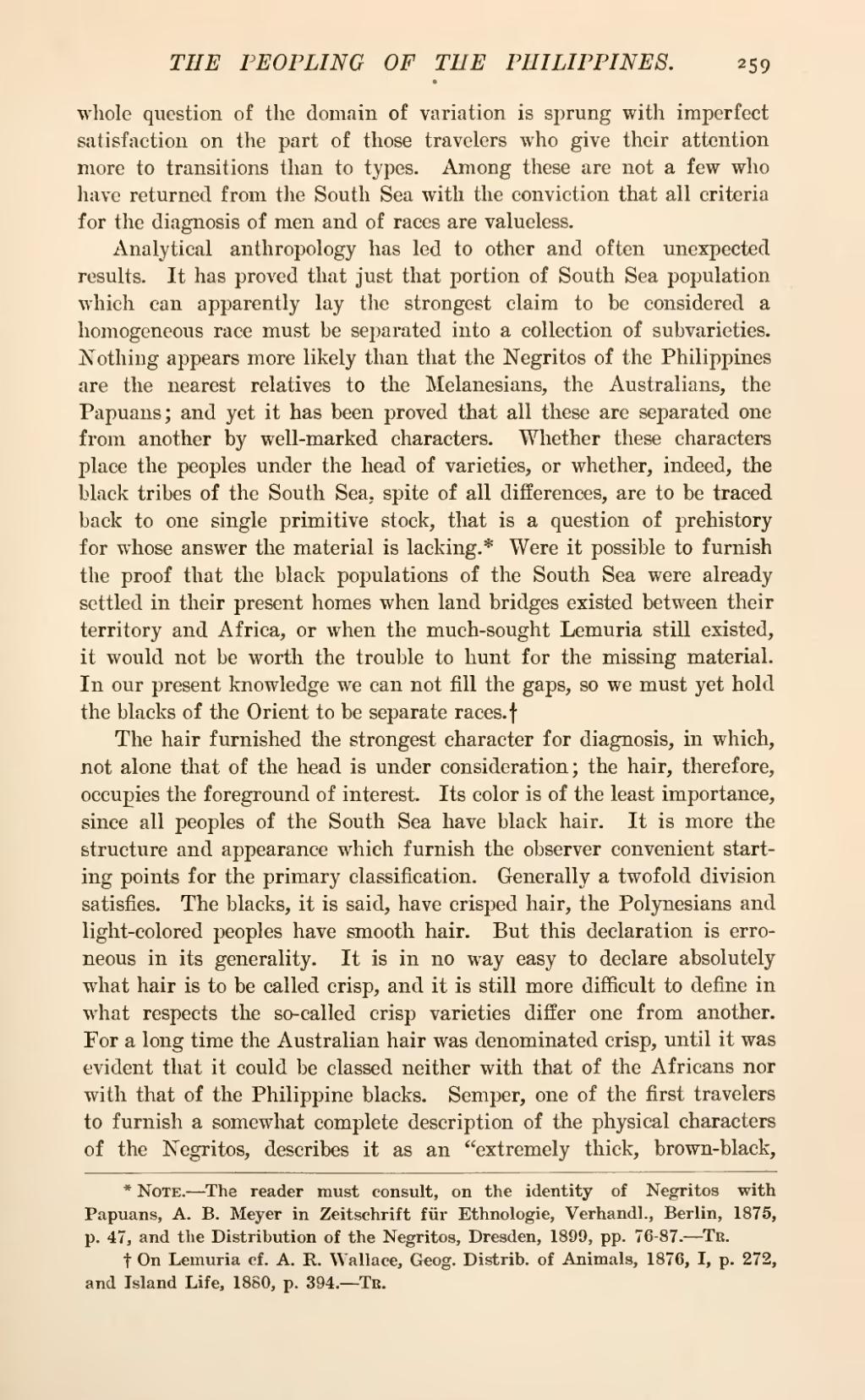whole question of the domain of variation is sprung with imperfect satisfaction on the part of those travelers who give their attention more to transitions than to types. Among these are not a few who have returned from the South Sea with the conviction that all criteria for the diagnosis of men and of races are valueless.
Analytical anthropology has led to other and often unexpected results. It has proved that just that portion of South Sea population which can apparently lay the strongest claim to be considered a homogeneous race must be separated into a collection of subvarieties. Nothing appears more likely than that the Negritos of the Philippines are the nearest relatives to the Melanesians, the Australians, the Papuans; and yet it has been proved that all these are separated one from another by well-marked characters. Whether these characters place the peoples under the head of varieties, or whether, indeed, the black tribes of the South Sea, spite of all differences, are to be traced back to one single primitive stock, that is a question of prehistory for whose answer the material is lacking.[1] Were it possible to furnish the proof that the black populations of the South Sea were already settled in their present homes when land bridges existed between their territory and Africa, or when the much-sought Lemuria still existed, it would not be worth the trouble to hunt for the missing material. In our present knowledge we can not fill the gaps, so we must yet hold the blacks of the Orient to be separate races.[2]
The hair furnished the strongest character for diagnosis, in which, not alone that of the head is under consideration; the hair, therefore, occupies the foreground of interest. Its color is of the least importance, since all peoples of the South Sea have black hair. It is more the structure and appearance which furnish the observer convenient starting points for the primary classification. Generally a twofold division satisfies. The blacks, it is said, have crisped hair, the Polynesians and light-colored peoples have smooth hair. But this declaration is erroneous in its generality. It is in no way easy to declare absolutely what hair is to be called crisp, and it is still more difficult to define in what respects the so-called crisp varieties differ one from another. For a long time the Australian hair was denominated crisp, until it was evident that it could be classed neither with that of the Africans nor with that of the Philippine blacks. Semper, one of the first travelers to furnish a somewhat complete description of the physical characters of the Negritos, describes it as an “extremely thick, brown-black,
- ↑ Note.—The reader must consult, on the identity of Negritos with Papuans, A. B. Meyer in Zeitschrift für Ethnologie, Verhandl., Berlin, 1875, p. 47, and the Distribution of the Negritos, Dresden, 1899, pp. 76-87.—Tr.
- ↑ On Lemuria cf. A. R. Wallace, Geog. Distrib. of Animals, 1876, I, p. 272, and Island Life, 1880, p. 394.—Tr.
